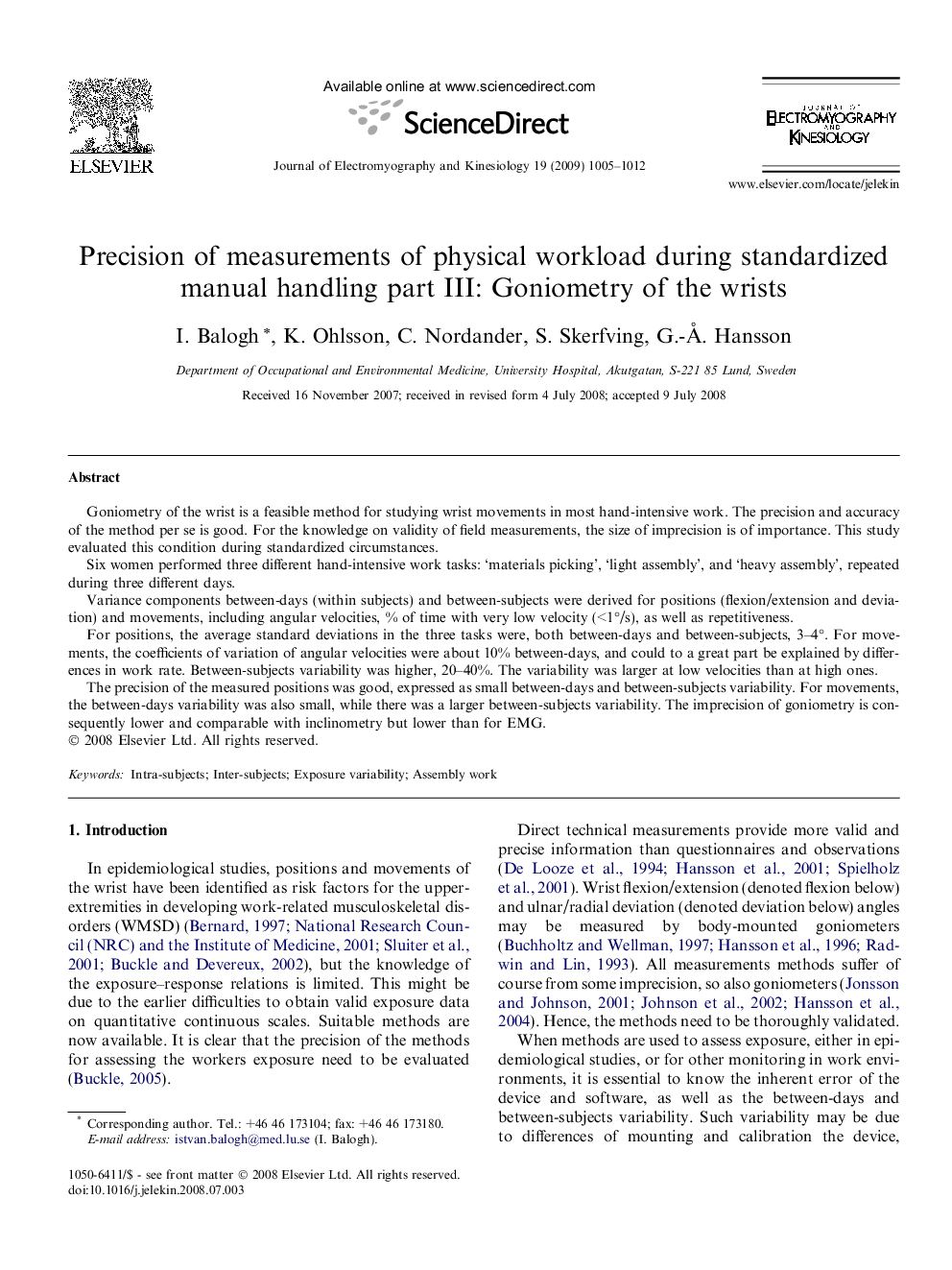| Article ID | Journal | Published Year | Pages | File Type |
|---|---|---|---|---|
| 4065240 | Journal of Electromyography and Kinesiology | 2009 | 8 Pages |
Goniometry of the wrist is a feasible method for studying wrist movements in most hand-intensive work. The precision and accuracy of the method per se is good. For the knowledge on validity of field measurements, the size of imprecision is of importance. This study evaluated this condition during standardized circumstances.Six women performed three different hand-intensive work tasks: ‘materials picking’, ‘light assembly’, and ‘heavy assembly’, repeated during three different days.Variance components between-days (within subjects) and between-subjects were derived for positions (flexion/extension and deviation) and movements, including angular velocities, % of time with very low velocity (<1°/s), as well as repetitiveness.For positions, the average standard deviations in the three tasks were, both between-days and between-subjects, 3–4°. For movements, the coefficients of variation of angular velocities were about 10% between-days, and could to a great part be explained by differences in work rate. Between-subjects variability was higher, 20–40%. The variability was larger at low velocities than at high ones.The precision of the measured positions was good, expressed as small between-days and between-subjects variability. For movements, the between-days variability was also small, while there was a larger between-subjects variability. The imprecision of goniometry is consequently lower and comparable with inclinometry but lower than for EMG.
